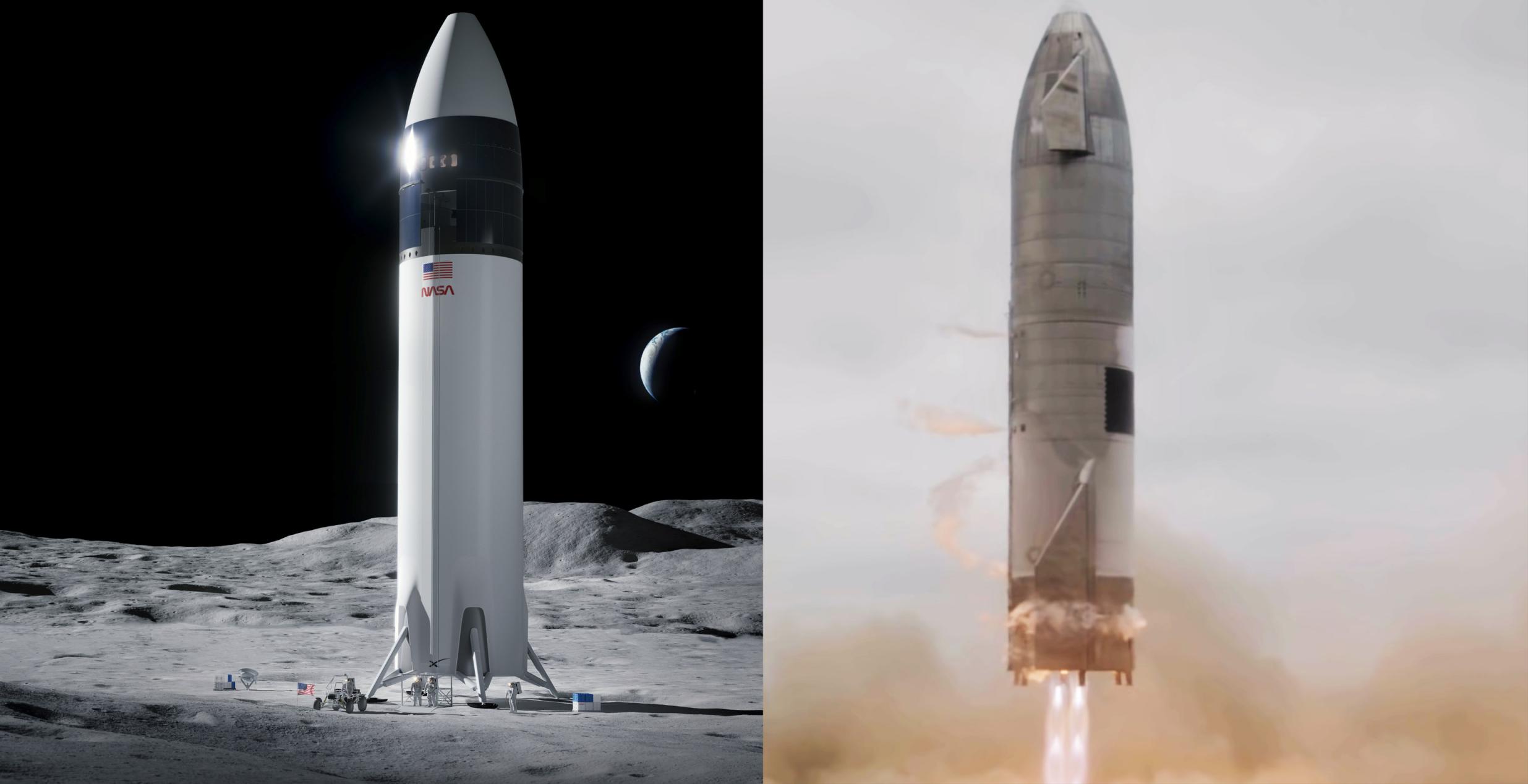
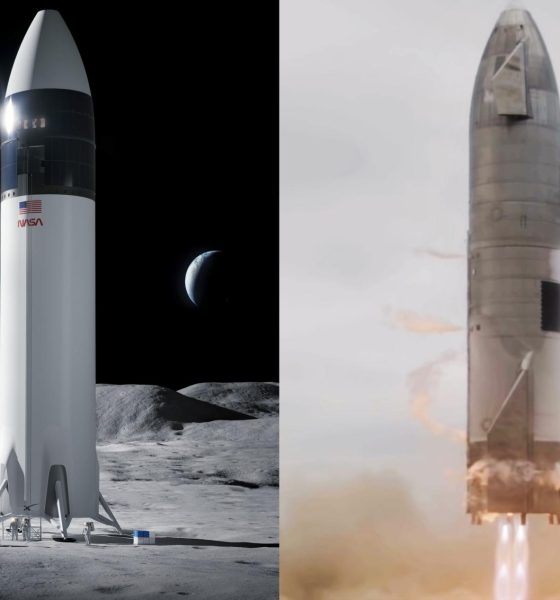
News
NASA contracts SpaceX for a second crewed Starship Moon landing
NASA says it exercised a contract option to purchase a second crewed Starship Moon landing from SpaceX.
Aside from its general existence, though, very little else is known about the new contract. NASA has yet to discuss when it will launch or which Artemis mission it will be attached to. A step further, it’s not actually clear why two crewed “demonstrations” are needed or what the difference between those two missions is. But more importantly, a broader Artemis Program manifest overview published days later revealed that NASA has plans for a truly unusual gap in crewed Moon landings in the mid-2020s.
Mere days after the announcement, an official NASA schedule showing the agency’s plans for the Moon and Mars over the next ten years explicitly contradicted it, showing only two Starship HLS demonstrations: one uncrewed and one crewed. Assuming that was simply a matter of poor coordination, the graphic reveals another bizarre reality: NASA appears to be explicitly planning for a three-year gap between SpaceX’s first crewed Starship landing in 2025 and the next crewed Moon landing, which the graphic suggested might occur in 2028.
Every single crewed Apollo Program mission to the Moon – including one aborted circumlunar mission, two missions to lunar orbit, and six successful landings – happened in less than four years. As published, NASA’s current Artemis plan would be akin to completing Apollo 11 – the first crewed Moon landing – in 1969 and then sitting around and waiting until 1972 for the next landing attempt. It’s difficult to properly convey just how bizarre such a huge gap would be.
There are only two obvious possible explanations. First, NASA might prefer a multi-year delay between crewed Moon landings to building and launching another SLS Block 1 rocket, in which case the three-year landing gap is explicitly the fault of years of SLS Block 1B delays – specifically NASA and Boeing’s work on the rocket’s larger Exploration Upper Stage (EUS). Second, it could be the case that NASA and/or SpaceX expects Starship’s first crewed landing to be delayed by one or several years. In 2018, SLS Block 1B was expected to debut as early as 2024. In 2022, NASA now says Block 1B will debut no earlier than 2027, while the last Block 1 launch is NET 2025.
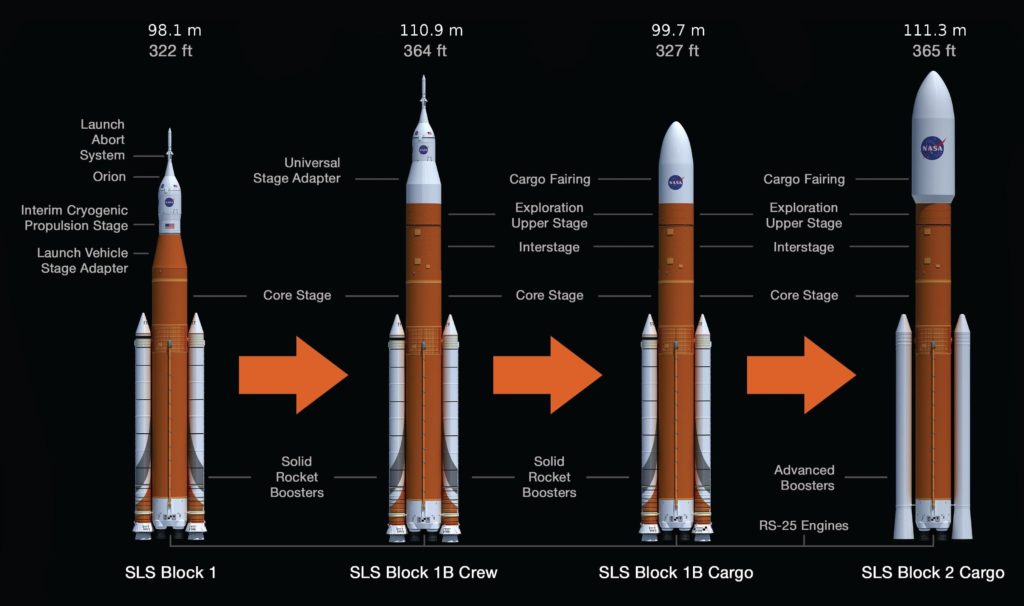
The first explanation is arguably much likelier given that structuring schedules based on the assumption of delays would make very little logistical sense. If SpaceX were to be ready on or close to the original schedule, that would leave NASA’s Moon landing program sitting on its hands for a third of a decade. In an alternative scenario, if NASA was planning to take full advantage of every year it has and SpaceX’s Starship demonstration was still delayed, the space agency would simply end up with more SLS and Orion hardware on hand than it planned for – only a problem if the rocket is literally incapable of launching more than once every year or two. There are few conceivable scenarios where having a mission waiting on a rocket would be preferable to having a rocket waiting for a mission
In other words, NASA probably doesn’t want to plan for a three-year gap between crewed Moon landings. Rather, the anchor NASA has chained the Artemis Program to – SLS and Orion – is likely giving it no choice in the matter. Worse, if SLS Block 1B and EUS development are as poorly managed as SLS Block 1, it’s possible – if not likely – that Artemis IV and V will slip another year or two. As a result, even in the likely scenario that SpaceX’s crewed HLS demonstration runs into a year or so of delays, there could still be a three or even four-year gap between crewed NASA Moon landings right when the program should be getting up to speed.
SpaceX, meanwhile, is privately developing Starship with the ultimate intent of landing humans on Mars. Without NASA’s interest and support, the Moon is a distraction from SpaceX’s real goals. Additionally, through NASA’s Human Landing System (HLS) program, SpaceX will be providing Starship as a service, meaning that the company will retain full rights to and ownership of any system that results. Put simply, there’s a real possibility that NASA’s seemingly extraordinary lack of motivation will create a scenario in which SpaceX could outgrow the space agency’s usefulness in the mid-2020s.
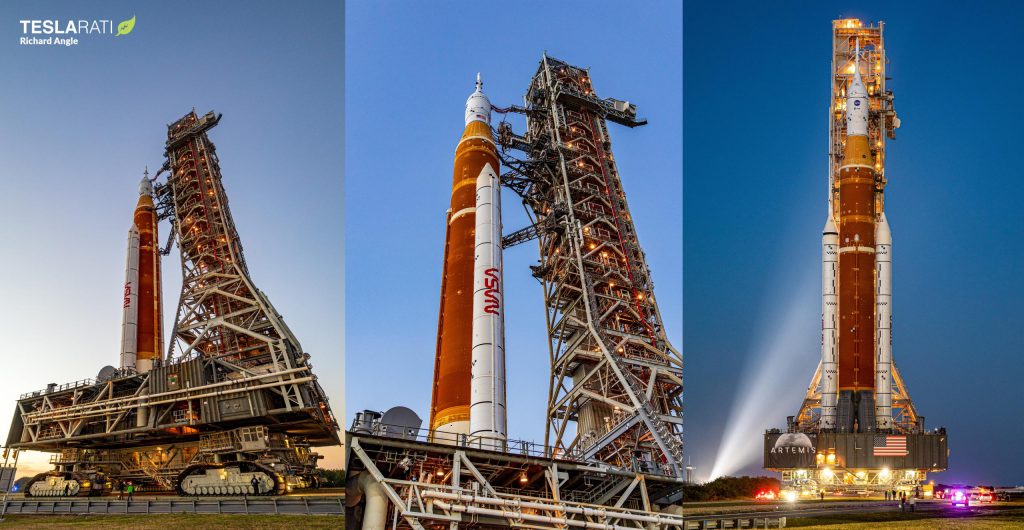
If, for example, SpaceX privately human-rates Starship for launches and entry, descent, and landing; it could use the Starship HLS lander it’s developed with NASA to land its own astronauts on the Moon without the need for SLS, Orion, or NASA. Given that the full extent of NASA’s Artemis Program ambitions appears to be one Moon landing per year, there would be plenty of room for SpaceX to perform multiple additional landings independent of NASA while the space agency’s contractors struggle to build and launch a single SLS rocket in the same time-frame.
Given the political power behind the SLS/Orion programs, it’s not clear if NASA will ever be willing or able to publicly support or take advantage of that logical and likely inevitable maturation of SpaceX’s Starship HLS capabilities. A crewed Moon mission – and especially a crewed Starship landing – successfully completed without the need for SLS or Orion could put NASA’s unsustainable rocket and spacecraft in a very uncomfortable position. Already, the HLS program has relegated SLS/Orion to the role of an Earth-Moon taxi service that just so happens to cost more than $4 billion per launch.
Above all else, uncertainty continues to reign over NASA’s longer-term human spaceflight plans – helped in no small part by the space agency’s lack of any obvious overarching strategy. NASA officials may religiously repeat phrases about how the Artemis Program aims to “sustainably” return humans to the Moon and pave the way to landing astronauts on Mars, but that doesn’t change the fact that the agency’s tangible, funded plans show virtually no evidence of serious preparations for either goal. Only time will tell where that rudderless ship ends up.

News
Tesla Full Self-Driving (FSD) testing gains major ground in Spain
Based on information posted by the Dirección General de Tráfico (DGT), it appears that Tesla is already busy testing FSD in the country.
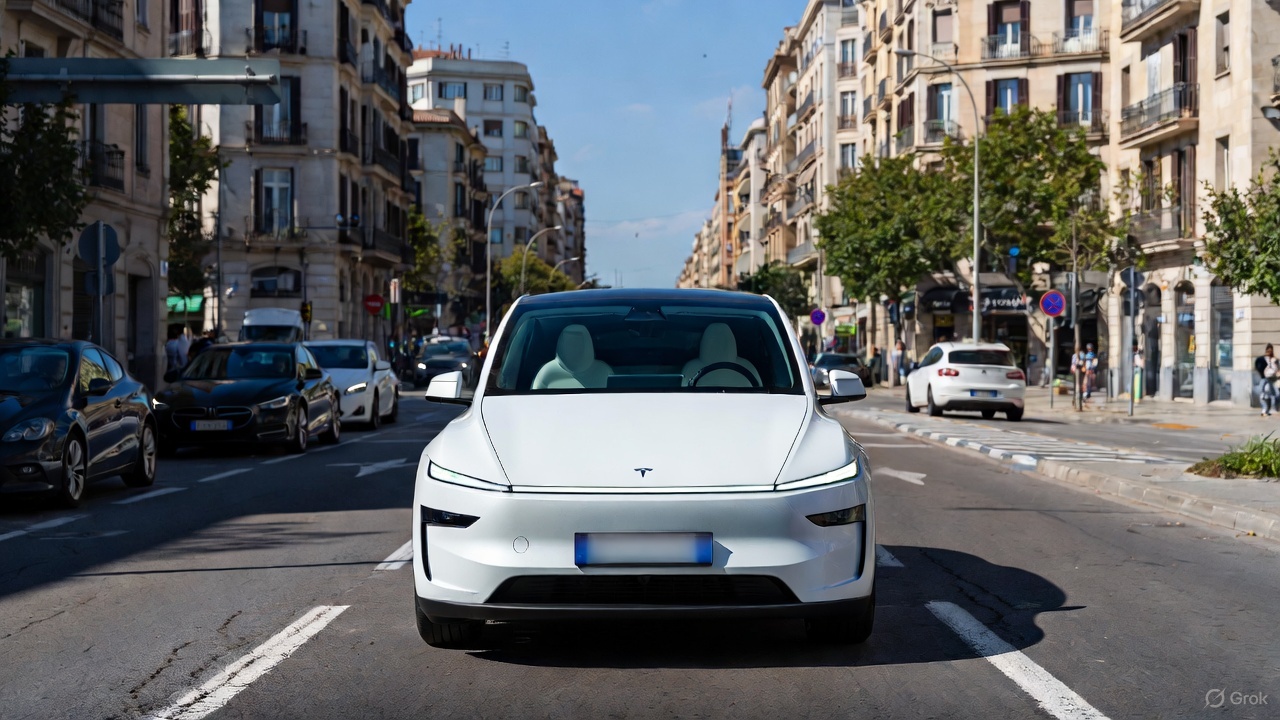
Tesla’s Full Self-Driving (Supervised) program is accelerating across Europe, with Spain emerging as a key testing hub under the country’s new ES-AV framework program.
Based on information posted by the Dirección General de Tráfico (DGT), it appears that Tesla is already busy testing FSD in the country.
Spain’s ES-AV framework
Spain’s DGT launched the ES-AV Program in July 2025 to standardize testing for automated vehicles from prototypes to pre-homologation stages. The DGT described the purpose of the program on its official website.
“The program is designed to complement and enhance oversight, regulation, research, and transparency efforts, as well as to support innovation and advancements in automotive technology and industry. This framework also aims to capitalize on the opportunity to position Spain as a pioneer and leader in automated vehicle technology, seeking to provide solutions that help overcome or alleviate certain shortcomings or negative externalities of the current transportation system,” the DGT wrote.
The program identifies three testing phases based on technological maturity and the scope of a company’s operations. Each phase has a set of minimum eligibility requirements, and applicants must indicate which phase they wish to participate in, at least based on their specific technological development.
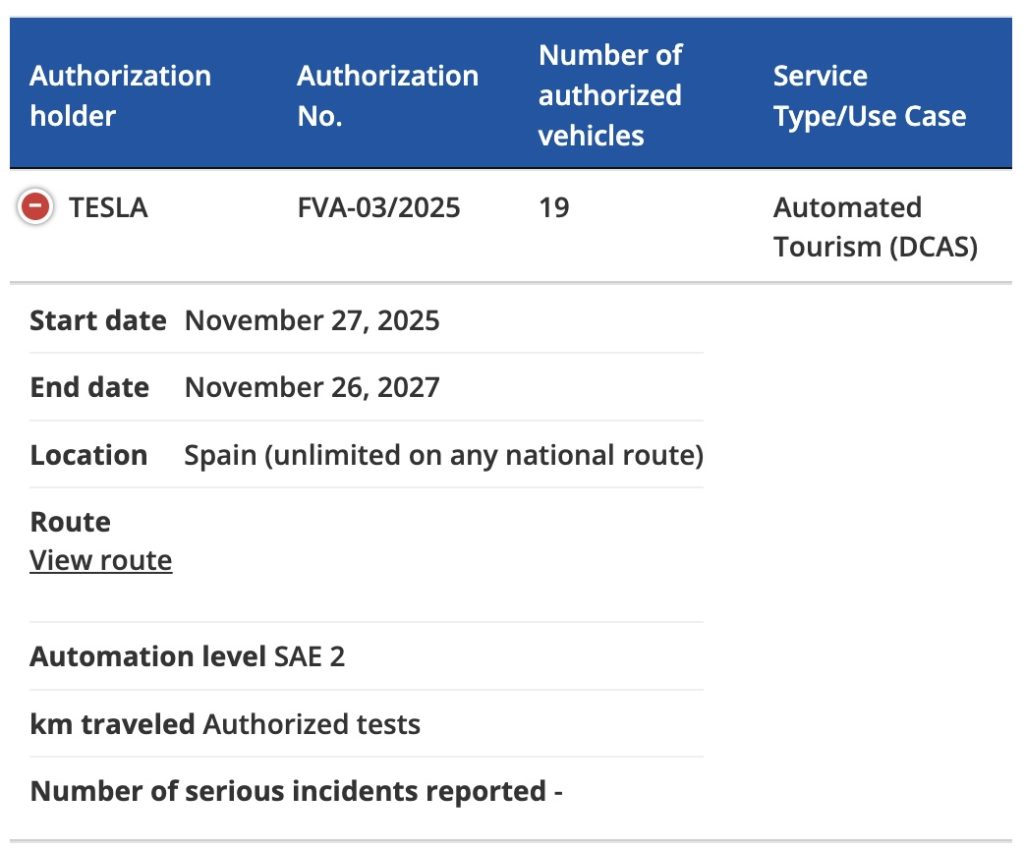
Tesla FSD tests
As noted by Tesla watcher Kees Roelandschap on X, the DGT’s new framework effectively gives the green flight for nationwide FSD testing. So far, Tesla Spain has a total of 19 vehicles authorized to test FSD on the country’s roads, though it would not be surprising if this fleet grows in the coming months.
The start date for the program is listed at November 27, 2025 to November 26, 2027. The DGT also noted that unlimited FSD tests could be done across Spain on any national route. And since Tesla is already in Phase 3 of the ES-AV Program, onboard safety operators are optional. Remote monitoring would also be allowed.
Tesla’s FSD tests in Spain could help the company gain a lot of real-world data on the country’s roads. Considering the scope of tests that are allowed for the electric vehicle maker, it seems like Spain would be one of the European countries that would be friendly to FSD’s operations. So far, Tesla’s FSD push in Europe is notable, with the company holding FSD demonstrations in Germany, France, and Italy. Tesla is also pushing for national approval in the Netherlands in early 2026.
News
Tesla FSD V14.2.1 is earning rave reviews from users in diverse conditions
Tesla’s Full Self-Driving (Supervised) software continues its rapid evolution, with the latest V14.2.1 update drawing widespread praise.

Tesla’s Full Self-Driving (Supervised) software continues its rapid evolution, with the latest V14.2.1 update drawing widespread praise for its smoother performance and smarter decision-making.
Videos and firsthand accounts from Tesla owners highlight V14.2.1 as an update that improves navigation responsiveness, sign recognition, and overall fluidity, among other things. Some drivers have even described it as “more alive than ever,” hinting at the system eventually feeling “sentient,” as Elon Musk has predicted.
FSD V14.2.1 first impressions
Early adopters are buzzing about how V14.2.1 feels less intrusive while staying vigilant. In a post shared on X, Tesla owner @LactoseLunatic described the update as a “huge leap forward,” adding that the system remains “incredibly assertive but still safe.”
Another Tesla driver, Devin Olsenn, who logged ~600 km on V14.2.1, reported no safety disengagements, with the car feeling “more alive than ever.” The Tesla owner noted that his wife now defaults to using FSD V14, as the system is already very smooth and refined.
Adverse weather and regulatory zones are testing grounds where V14.2.1 shines, at least according to testers in snow areas. Tesla watcher Sawyer Merritt shared a video of his first snowy drive on unplowed rural roads in New Hampshire, where FSD did great and erred on the side of caution. As per Merritt, FSD V14.2.1 was “extra cautious” but it performed well overall.
Sign recognition and freeway prowess
Sign recognition also seemed to show improvements with FSD V14.2.1. Longtime FSD tester Chuck Cook highlighted a clip from his upcoming first-impressions video, showcasing improved school zone behavior. “I think it read the signs better,” he observed, though in standard mode, it didn’t fully drop to 15 mph within the short timeframe. This nuance points to V14.2.1’s growing awareness of temporal rules, a step toward fewer false positives in dynamic environments.
FSD V14.2.1 also seems to excel in high-stress highway scenarios. Fellow FSD tester @BLKMDL3 posted a video of FSD V14.2.1 managing a multi-lane freeway closure due to a police chase-related accident. “Perfectly handles all lanes of the freeway merging into one,” the Tesla owner noted in his post on X.
FSD V14.2.1 was released on Thanksgiving, much to the pleasant surprise of Tesla owners. The update’s release notes are almost identical to the system’s previous iteration, save for one line item read, “Camera visibility can lead to increased attention monitoring sensitivity.”
News
Tesla FSD Supervised ride-alongs in Europe begin in Italy, France, and Germany
The program allows the public to hop in as a non-driving observer to witness FSD navigate urban streets firsthand.

Tesla has kicked off passenger ride-alongs for Full Self-Driving (Supervised) in Italy, France and Germany. The program allows the public to hop in as a non-driving observer to witness FSD navigate urban streets firsthand.
The program, detailed on Tesla’s event pages, arrives ahead of a potential early 2026 Dutch regulatory approval that could unlock a potential EU-wide rollout for FSD.
Hands-Off Demos
Tesla’s ride-along invites participants to “ride along in the passenger seat to experience how it handles real-world traffic & the most stressful parts of daily driving, making the roads safer for all,” as per the company’s announcement on X through its official Tesla Europe & Middle East account.
Sign-ups via localized pages offer free slots through December, with Tesla teams piloting vehicles through city streets, roundabouts and highways.
“Be one of the first to experience Full Self-Driving (Supervised) from the passenger seat. Our team will take you along as a passenger and show you how Full Self-Driving (Supervised) works under real-world road conditions,” Tesla wrote. “Discover how it reacts to live traffic and masters the most stressful parts of driving to make the roads safer for you and others. Come join us to learn how we are moving closer to a fully autonomous future.”
Building trust towards an FSD Unsupervised rollout
Tesla’s FSD (Supervised) ride-alongs could be an effective tool to build trust and get regular car buyers and commuters used to the idea of vehicles driving themselves. By seating riders shotgun, Tesla could provide participants with a front row seat to the bleeding edge of consumer-grade driverless systems.
FSD (Supervised) has already been rolled out to several countries, such as the United States, Canada, Australia, New Zealand, and partially in China. So far, FSD (Supervised) has been received positively by drivers, as it really makes driving tasks and long trips significantly easier and more pleasant.
FSD is a key safety feature as well, which became all too evident when a Tesla driving on FSD was hit by what seemed to be a meteorite in Australia. The vehicle moved safely despite the impact, though the same would likely not be true had the car been driven manually.









